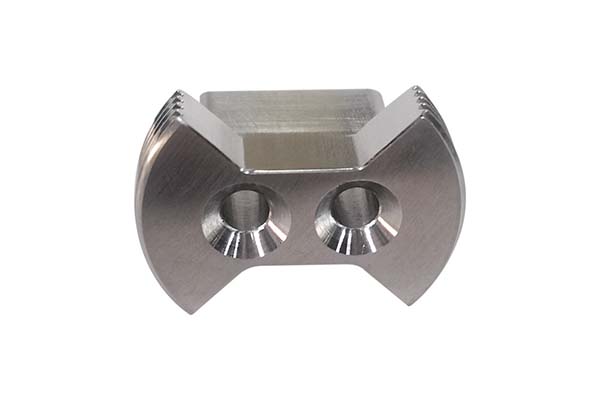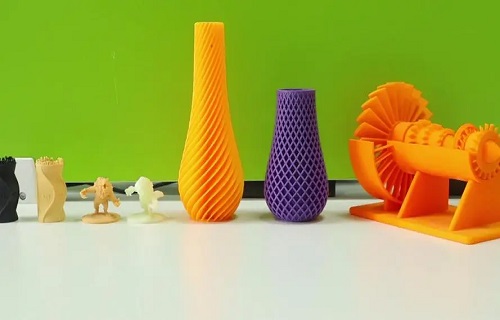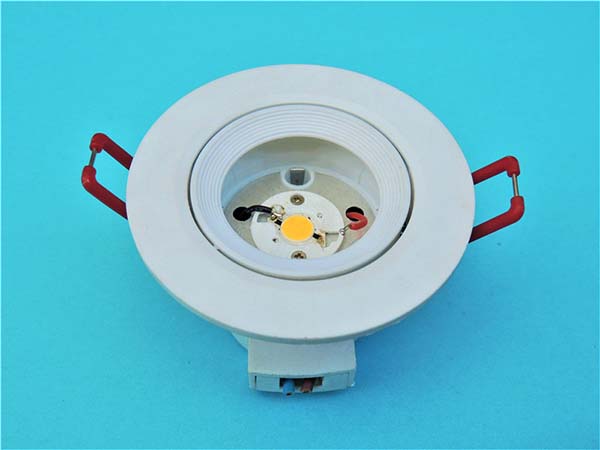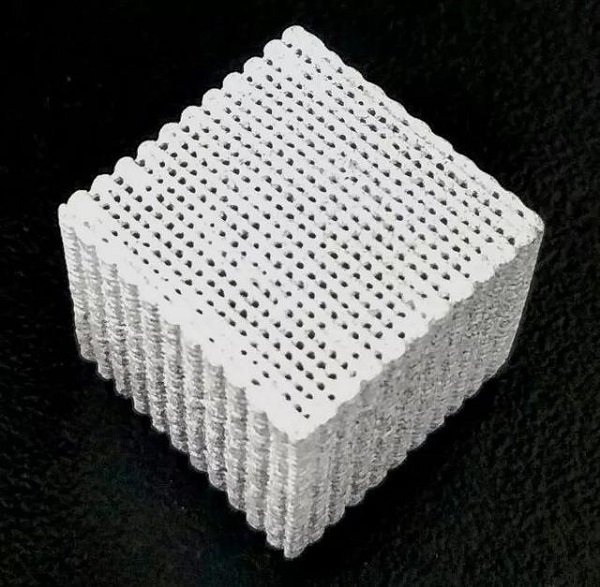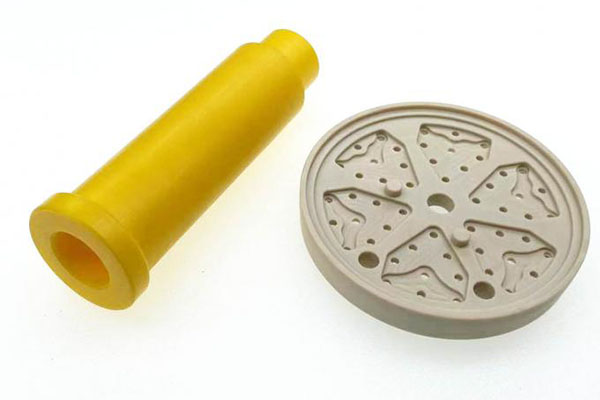You’ve chosen AlSi10Mg for its unbeatable combination of light weight and strength, eager to create aerospace components, automotive parts, or lightweight tooling that outperforms plastic or steel. But your 3D prints are falling short: the parts are porous and weak, crack under moderate stress, or have rough surfaces that need hours of 打磨. Maybe the print warps so badly it no longer fits, or the thermal conductivity—critical for heat sinks—isn’t as high as expected. Worse, your “high-strength” prototype can’t match the performance of cast AlSi10Mg, wasting expensive powder and machine time.
AlSi10Mg, the most widely used 3D printable aluminum alloy, is a cornerstone of lightweight engineering. But 3D printing it requires precision that goes beyond other metals, thanks to its unique material properties—from its low melting point to its sensitivity to oxidation. Success means mastering specialized 3D printing processes to avoid porosity, ensuring full density, and leveraging its performance and benefits for applications where every gram counts. In this guide, we’ll unlock the potential of 3D printing AlSi10Mg, helping you create parts that are strong, lightweight, and ready for demanding real-world use.
Material Properties: The Advantages of AlSi10Mg
AlSi10Mg’s popularity stems from its exceptional material properties, which 3D printing must preserve to deliver its full potential:
- Lightweight and strong: AlSi10Mg’s defining trait is its lightweight nature—with a density of just 2.68 g/cm³, it’s about one-third the weight of steel. Yet it’s far from weak: its tensile strength ranges from 300-400 MPa, with a yield strength of 200-280 MPa, offering an impressive high-strength-to-weight ratio that makes it ideal for weight-critical applications like aerospace and automotive parts. This balance allows engineers to reduce mass without sacrificing structural integrity, improving fuel efficiency and performance.
- Thermal and mechanical traits: AlSi10Mg excels in thermal conductivity (120-150 W/m·K), much higher than stainless steel or titanium, making it perfect for heat sinks, cooling plates, and electronics casings that need to dissipate heat quickly. Its fatigue resistance—the ability to withstand repeated stress—is solid for an aluminum alloy, critical for moving parts like suspension components or engine brackets. Its elongation (stretch before breaking) is 5-10%, balancing strength with enough ductility to avoid sudden failure. The grain structure, when printed correctly, is fine and uniform, enhancing these properties.
- Corrosion and purity: While not as corrosion-resistant as stainless steel, AlSi10Mg forms a protective oxide layer that resists mild corrosion, suitable for most indoor or dry environments. For harsher conditions (like saltwater), it can be coated with anodizing or paint. Material purity is key—impurities like iron or copper can weaken the alloy, so 3D printable powders are typically 99.5% pure with a particle size of 15-45 μm for consistent flow and melting.
3D Printing Processes: Perfecting Aluminum Fusion
3D printing AlSi10Mg requires processes that handle its low melting point (577°C for the alloy) and prevent oxidation, with each method offering unique benefits:
- Selective Laser Melting (SLM): The most common process for AlSi10Mg, SLM uses a high-power laser (200-400 W) to melt aluminum powder in a nitrogen or argon gas shielding environment—critical because aluminum oxidizes rapidly when molten, forming brittle oxides that weaken the part. Key print parameters include laser power (300 W for optimal fusion), scan speed (1000-2000 mm/s), and layer thickness (30-60 μm). SLM achieves 99%+ density, ensuring strength and thermal conductivity aren’t compromised. Support structures (often made of the same alloy) are needed for overhangs, removed via machining or wire EDM.
- Direct Metal Laser Sintering (DMLS): Similar to SLM but sintering (partially melting) the powder, DMLS is faster but achieves slightly lower density (96-98%). It’s suitable for non-critical parts like prototypes or low-stress components, with post-processing like hot isostatic pressing (HIP) able to close small pores. DMLS uses the same gas shielding as SLM to prevent oxidation, with slicing software optimizing laser paths to avoid overheating, which can cause warping.
- Critical considerations: AlSi10Mg powder is hygroscopic (absorbs moisture), so it must be dried before printing—moisture causes porosity when heated. The build platform is often preheated to 100-200°C to reduce thermal stress and warping. Post-processing typically includes heat treatment (T6 aging: solution annealing followed by artificial aging) to strengthen the alloy, increasing hardness and tensile strength by 10-15%. Machining or polishing may be needed for tight tolerances or smooth surfaces.
Applications: Where 3D Printed AlSi10Mg Excels
AlSi10Mg’s unique blend of light weight, strength, and thermal conductivity makes it indispensable in these applications:
- Aerospace and automotive: Aerospace components like wing brackets, fuel system parts, and satellite structures rely on AlSi10Mg’s high-strength-to-weight ratio—reducing aircraft weight by 10-20% improves fuel efficiency. In automotive, automotive parts such as engine mounts, gearbox components, and lightweight frames use it to enhance performance and meet emissions standards. 3D printing allows complex designs like internal cooling channels, which further boost efficiency in engine parts.
- Industrial and electronics: Industrial tooling (fixtures, jigs) benefits from AlSi10Mg’s light weight—workers can handle tools more easily, reducing fatigue. Its thermal conductivity makes it ideal for electronics casings and heat sinks, dissipating heat from CPUs or power electronics. Lightweight structures like robotic arms or drone frames use it to balance strength and agility, with 3D printing enabling custom designs that maximize performance.
- Sports and consumer products: Sports equipment—bicycle frames, tennis rackets, and golf club heads—uses 3D printed AlSi10Mg to reduce weight while maintaining stiffness, improving speed and maneuverability. High-performance consumer products like camera rigs or portable tools leverage its durability and light weight, making them easier to carry without sacrificing functionality.
Performance and Benefits: Why AlSi10Mg Stands Out
3D printed AlSi10Mg offers a suite of performance and benefits that make it a top choice for modern engineering:
- Strength and efficiency: Its high-strength-to-weight ratio is unmatched in its class—parts are 30-50% lighter than steel equivalents with comparable load-bearing capacity. This translates to tangible benefits: aerospace fuel savings, automotive emissions reductions, and easier handling of industrial tools. Its fatigue resistance ensures parts like suspension components withstand millions of cycles without failure.
- Thermal management and customization: AlSi10Mg’s excellent thermal conductivity makes it a go-to for heat-dissipating parts, outperforming plastics and even some metals. 3D printing unlocks complex geometries—like lattice structures or conformal cooling channels—that optimize heat flow, something traditional machining can’t achieve. This customizability allows engineers to tailor parts to specific thermal or structural needs, from lightweight brackets to high-performance heat sinks.
- Speed and cost savings: Rapid prototyping with AlSi10Mg lets teams test designs in days instead of weeks, accelerating product development. For low-volume production, 3D printing reduces material waste (up to 70% less than machining) and eliminates the need for expensive tooling, cutting lead times by 50-70%. Even for complex parts, the ability to print as a single piece reduces assembly steps, lowering costs and improving reliability.
Yigu Technology’s Perspective: Precision in AlSi10Mg Printing
At Yigu Technology, we specialize in 3D printing AlSi10Mg for clients who demand lightweight, high-performance parts. We use SLM with strict gas shielding (oxygen levels below 0.1%) and pre-dried powder to ensure porosity-free prints. Our post-processing includes T6 heat treatment to maximize strength and precision machining for tight tolerances. Whether you need aerospace components or thermal management parts, we validate every part with tensile testing, thermal conductivity measurements, and dimensional checks. 3D printing AlSi10Mg isn’t just about making light parts—it’s about creating solutions that redefine what’s possible in lightweight engineering, combining strength, efficiency, and design freedom in ways no other material can match.
Frequently Asked Questions (FAQ)
- Why is my 3D printed AlSi10Mg part porous?
Porosity is often caused by moisture in the powder or insufficient laser power. Dry powder at 80-100°C for 2-4 hours before printing, and ensure laser power is high enough to fully melt the powder (300 W for most printers). Check gas shielding—oxygen levels above 0.5% cause oxide inclusions, which appear as pores. Post-print HIP can close small pores, improving density.
- How does 3D printed AlSi10Mg compare to cast AlSi10Mg?
3D printed AlSi10Mg has better tensile strength (300-400 MPa vs. 250-300 MPa for cast) and finer grain structure, enhancing fatigue resistance. Cast parts may have better corrosion resistance in some cases, but 3D printed parts excel in complex geometries and thermal conductivity (no hidden pores block heat flow). For simple parts, casting is cheaper; for complex designs, 3D printing is superior.
- Can 3D printed AlSi10Mg be used for load-bearing parts?
Yes, when printed correctly. It’s suitable for load-bearing capacity in applications like aerospace brackets or automotive suspension parts, withstanding tensile stresses up to 350 MPa. For critical loads, ensure the part is printed with 100% infill density, post-treated with HIP, and tested—we recommend validating with tensile and fatigue tests to match your specific load requirements.
